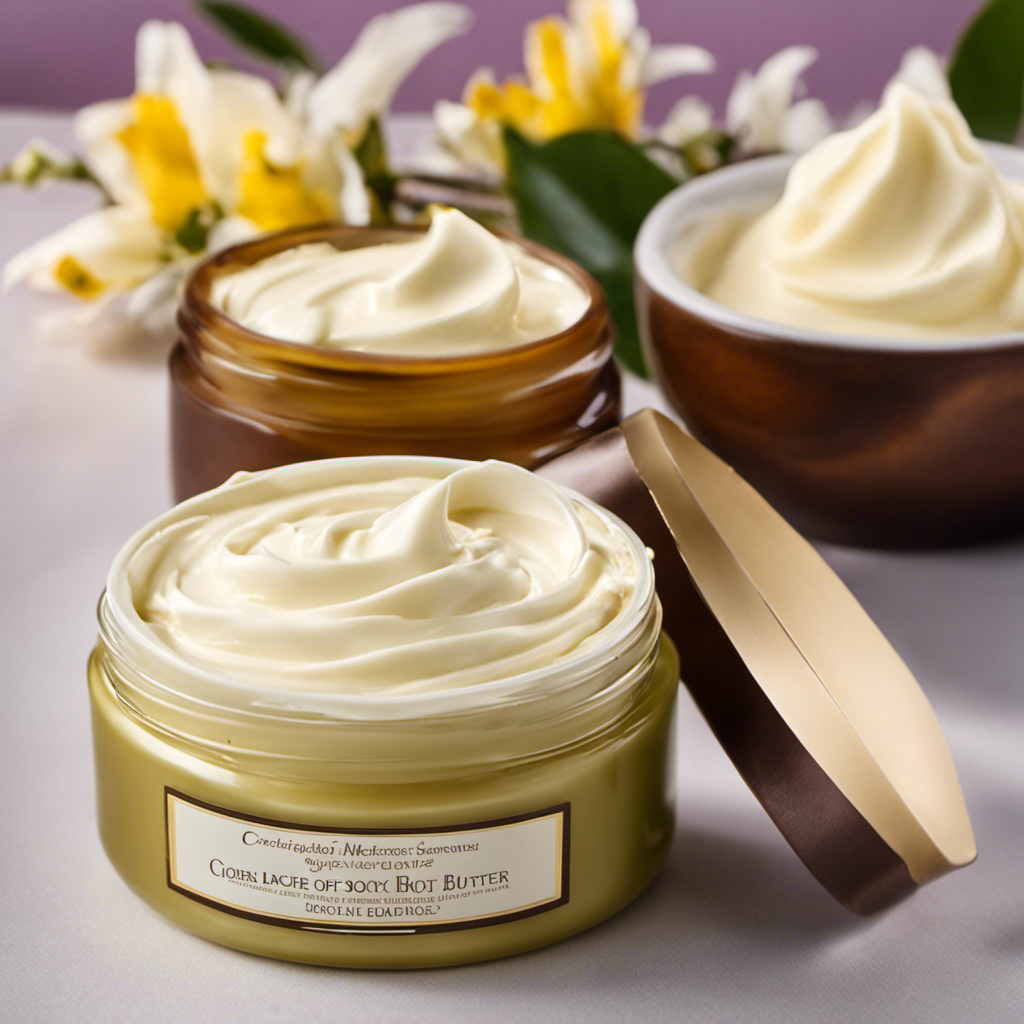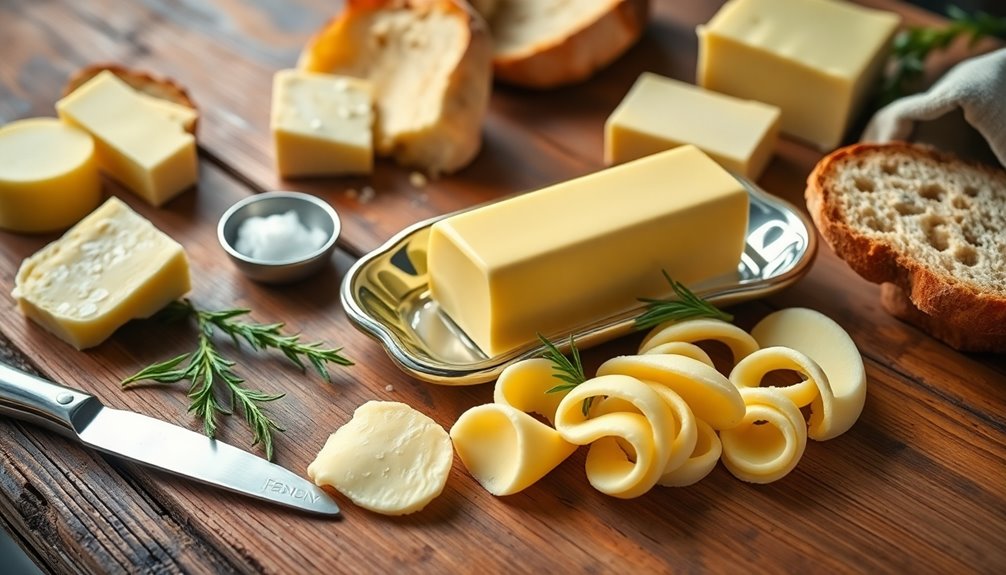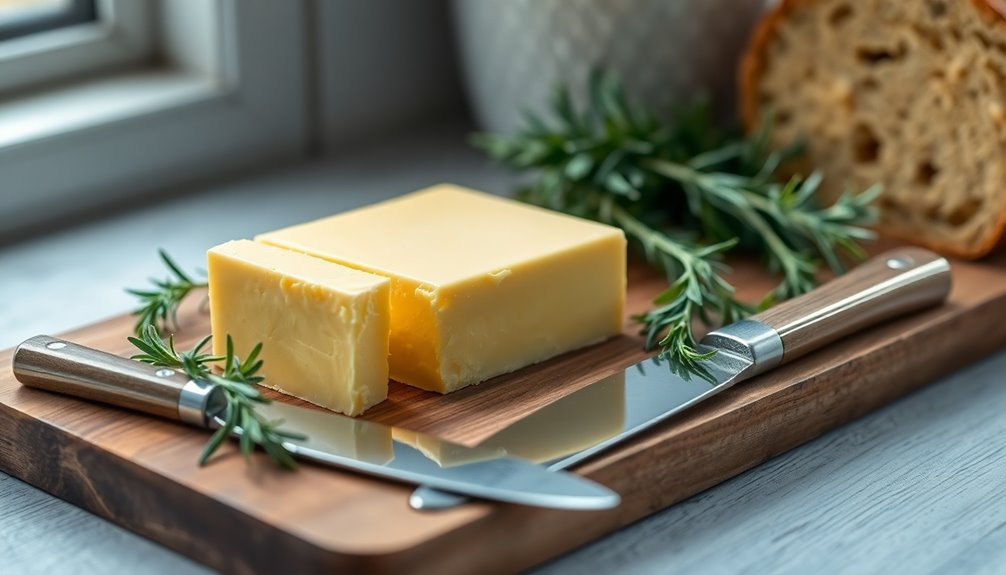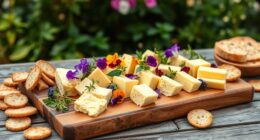As an avid snowboarder, I have experienced the thrill of carving through the mountains, catching some air, and conquering challenging terrains.
But let me tell you, nothing compares to the exhilarating sensation of butter snowboarding. It’s like dancing on the snow, effortlessly gliding and spinning with style and finesse.
In this article, I will dive into the world of butter snowboarding, exploring its history, techniques, benefits, gear, and more.
So get ready to be amazed by this incredible snowboarding phenomenon.
Key Takeaways
- Butter snowboarding originated in the early 2000s and has become a popular freestyle snowboarding technique.
- Mastering advanced buttering techniques is key to improving skills.
- Smooth transitions are essential for maintaining flow and rhythm.
- Butter snowboarding enhances board control, balance, and coordination.
History of Butter Snowboarding
You might be interested to know that the history of butter snowboarding dates back to the early 2000s.
Butter snowboarding has come a long way since its inception, evolving into a popular freestyle snowboarding technique known for its smooth and stylish movements.
Over the years, riders have pushed the boundaries of butter snowboarding, incorporating spins, grabs, and flips into their routines.
As the sport gained popularity, specific spots became renowned for their ideal conditions and terrain for butter snowboarding.
Places like Mammoth Mountain in California and Keystone Resort in Colorado have become popular destinations for riders looking to showcase their buttering skills.
These spots offer wide open slopes, natural features, and perfectly groomed runs, providing the perfect canvas for riders to express themselves through butter snowboarding.
Now, let’s delve into the techniques and tricks in butter snowboarding.
Techniques and Tricks in Butter Snowboarding
When it comes to butter snowboarding, mastering advanced buttering techniques and transitions is key to taking your skills to the next level.
Advanced buttering techniques involve using your edges and body positioning to create smooth and controlled movements while sliding on the snow.
Mastering buttering transitions allows you to seamlessly flow from one butter trick to another, creating a fluid and stylish ride down the slopes.
In this discussion, I will explore different advanced buttering techniques and provide tips on how to perfect your buttering transitions for a truly impressive snowboarding experience.
Advanced Buttering Techniques
One of the most effective techniques for advanced buttering is the nose roll. This move involves rolling your board onto its nose while maintaining balance and control. It requires a combination of skill, agility, and confidence on the snow.
As you progress in your buttering journey, you’ll discover the various styles and tricks that can be performed. Here are a few examples:
-
The Tail Butter: This involves lifting the tail of your board off the snow while keeping the nose down. It creates a stylish and dynamic effect.
-
The Butter 180: This trick combines a buttering move with a 180-degree spin, adding an extra level of difficulty and style.
-
The Hand Drag: This move requires dragging your hand along the snow while buttering, adding a unique visual element to your performance.
-
The Shifty: This trick involves shifting your weight and twisting your body mid-butter, creating a playful and creative effect.
Mastering Buttering Transitions
Transitioning smoothly between buttering moves is essential for maintaining flow and rhythm on the slopes. It requires a combination of balance, technique, and practice. To help you understand the different transitions and their level of difficulty, take a look at the table below:
| Transition | Difficulty Level | Description |
|---|---|---|
| Flat to Nose Press | Easy | Shift your weight from the center of the board to the nose. |
| Nose to Tail Press | Moderate | Transfer your weight from the nose to the tail of the board. |
| Tail to Flat Press | Difficult | Move your weight from the tail to the center of the board. |
| Flat to Tail Press | Expert | Shift your weight from the center to the tail of the board. |
Mastering these transitions is crucial for excelling in butter snowboarding competitions. Some popular butter snowboarding locations include Park City Mountain Resort in Utah, Mammoth Mountain in California, and Whistler Blackcomb in British Columbia. These resorts offer a wide range of terrain and features specifically designed for buttering, making them ideal destinations for riders looking to showcase their skills. So, get out there, practice those transitions, and have fun buttering your way down the slopes!
Benefits of Butter Snowboarding
When it comes to butter snowboarding, there are several key benefits that make it worth trying.
Firstly, it enhances board control by allowing you to manipulate the board in unique and creative ways.
Secondly, it improves your balance and coordination as you learn to shift your weight and maintain control while performing butter tricks.
Lastly, it adds an extra layer of fun and style to your snowboarding experience, as you glide effortlessly across the snow, showcasing your skills and creativity.
Enhanced Board Control
To enhance your board control while butter snowboarding, you should focus on shifting your weight and bending your knees. Maintaining proper body positioning is essential for maximizing control and stability on the snowboard. Here are some key points to remember:
- Center your weight over the snowboard by keeping your body aligned with the board.
- Bend your knees to absorb bumps and maintain balance.
- Use your arms for counterbalance and to maintain a centered position.
- Engage your core muscles to help with stability and control.
By incorporating these techniques into your butter snowboarding, you can greatly enhance your board control. Not only will this improve your overall performance, but it will also enhance your style and creativity on the slopes.
With precise control over your board, you have the freedom to express yourself through fluid and stylish movements. Now, let’s explore how improved balance and coordination can further enhance your butter snowboarding skills.
Improved Balance and Coordination
Improving your balance and coordination is crucial for enhancing your overall performance on the slopes. When it comes to snowboarding, having good balance and coordination allows you to maneuver smoothly, maintain control, and execute tricks with precision. To improve these skills, it is important to focus on flexibility and body awareness. Stretching exercises can help improve flexibility, allowing for a wider range of motion and better control of your body movements. Body awareness, on the other hand, involves being conscious of your body position and movements. This can be honed through specific exercises and drills that target proprioception and spatial awareness. By incorporating these elements into your training, you will not only enhance your snowboarding skills but also reduce the risk of injury on the slopes.
| Flexibility | Body Awareness |
|---|---|
| Dynamic stretching | Balance exercises |
| Yoga | Core stability |
| Foam rolling | Visualizing tricks |
| Pilates | Proprioception drills |
Gear and Equipment for Butter Snowboarding
You’ll need a specialized snowboard and flexible boots for butter snowboarding. The gear you choose can greatly impact your performance and overall experience on the slopes. Here are some important factors to consider when selecting butter snowboarding gear:
-
Snowboard: Look for a board with a soft flex and a wider waist width to provide stability and allow for better maneuverability while performing butter tricks.
-
Boots: Opt for boots with a soft to medium flex that offer good ankle support while still allowing for flexibility and freedom of movement.
-
Bindings: Choose bindings that provide a responsive and secure connection between your boots and the board, ensuring optimal control and stability.
-
Outerwear: Invest in quality outerwear that is waterproof, breathable, and offers insulation to keep you dry and comfortable in varying weather conditions.
When it comes to the best brands for butter snowboarding gear, some popular options include Burton, Capita, Rome, and Salomon. These brands are known for their high-quality products designed specifically for freestyle riding and buttering. Remember, finding the right gear that suits your riding style and preferences is crucial for maximizing your performance and enjoyment on the slopes.
Training and Conditioning for Butter Snowboarding
When it comes to training and conditioning for butter snowboarding, it’s important to focus on building strength and flexibility in your core and lower body. These are key areas that will help you execute those smooth and stylish butter tricks on the slopes. To achieve this, there are various training techniques and conditioning exercises that can greatly enhance your performance.
One effective training technique is incorporating balance exercises into your routine. This could include exercises such as single-leg squats, balance boards, or yoga poses like the tree pose. These exercises not only strengthen your core and lower body, but also improve your overall stability and control on the snowboard.
In addition to balance exercises, plyometric training can also be beneficial for butter snowboarding. Plyometrics involve explosive movements that build power and agility. Exercises like box jumps, lateral bounds, and medicine ball throws can help you generate the necessary force and quickness to perform butter tricks with ease.
Remember, consistency and proper form are key when it comes to training for butter snowboarding. Incorporating these training techniques and conditioning exercises into your routine will help you build the strength and flexibility needed to excel on the slopes. So get out there, practice, and soon you’ll be buttering like a pro!
| Training Techniques | Conditioning Exercises |
|---|---|
| Balance exercises | Single-leg squats |
| Balance boards | |
| Yoga tree pose | |
| Plyometric training | Box jumps |
| Lateral bounds | |
| Medicine ball throws |
Butter Snowboarding Vs. Traditional Snowboarding
In terms of style and technique, there are some key differences between butter snowboarding and traditional snowboarding. Butter snowboarding is a freestyle snowboarding technique that focuses on smooth, fluid movements and creative tricks. Here are some important distinctions:
-
Flexibility: Butter snowboarding requires a high level of flexibility to execute intricate spins, rotations, and presses.
-
Board Control: Unlike traditional snowboarding, butter snowboarding involves manipulating the board’s edges and flex to maintain balance and control.
-
Trick Variety: Butter snowboarding offers a wide range of unique tricks, including butters, presses, and spins, allowing riders to showcase their creativity.
-
Competitions: Butter snowboarding competitions typically judge riders on their style, execution, and creativity, rather than speed or big air.
By mastering butter snowboarding techniques, riders can add a new level of creativity and style to their snowboarding repertoire.
Famous Butter Snowboarders and Influencers
If you want to follow the latest trends and tricks in the world of freestyle snowboarding, these famous butter snowboarders and influencers are worth checking out. They have mastered the art of butter snowboarding and have gained a huge following for their creative and stylish moves on the slopes. Not only do they showcase their skills on social media, but they also provide helpful tutorials for anyone looking to improve their butter snowboarding techniques. Here are some of the top butter snowboarders and influencers to follow:
| Name | Instagram Handle | YouTube Channel |
|---|---|---|
| ButterMaster | @buttermaster | ButterMasterTV |
| ShredQueen | @shredqueen | ShredQueenSnow |
| FreestyleGuru | @freestyleguru | FreestyleGuruSnowboard |
These individuals have dedicated their lives to mastering butter snowboarding and are constantly pushing the boundaries of what is possible on a snowboard. Their tutorials provide valuable insights and tips for riders of all levels. So, if you’re looking to up your butter game, be sure to check them out!
Frequently Asked Questions
Can Butter Snowboarding Be Done on Any Type of Snowboard?
Yes, butter snowboarding can be done on any type of snowboard, but some types are better suited for it. The best snowboard types for buttering tricks are usually shorter, softer, and have a rocker or hybrid camber profile. Beginners often make the mistake of using a longer, stiffer board that makes it harder to initiate and hold buttering tricks.
How Long Does It Take to Learn Butter Snowboarding?
Learning butter snowboarding has a steep learning curve, but with consistent practice, it can be mastered in a few weeks. It requires a significant time commitment to develop the necessary skills and balance on the snowboard.
Are There Any Safety Concerns or Risks Involved in Butter Snowboarding?
Safety precautions should be taken when butter snowboarding to minimize the risk of common injuries. It’s important to wear protective gear, warm up properly, and gradually progress your skills to reduce the chance of accidents.
Can Butter Snowboarding Be Done in Any Weather Conditions?
Butter snowboarding can be done in various weather conditions, depending on the snowboard type. However, it is generally easier to perform butter tricks on softer snow, as it allows for smoother and more controlled movements.
Are There Any Specific Clothing or Gear Recommendations for Butter Snowboarding?
When it comes to butter snowboarding, having the right clothing and gear is crucial. For clothing, I recommend layers that are flexible and moisture-wicking. As for gear, make sure to have a board with a soft flex and bindings that provide good control.
Conclusion
In conclusion, butter snowboarding is not just a sport, it’s a form of art on the slopes. It has a rich history and has evolved into a unique style of snowboarding that allows riders to showcase their creativity and style.
With its own set of techniques and tricks, butter snowboarding offers a thrilling and enjoyable experience. Whether you’re a beginner or an expert, this exhilarating sport is sure to leave you feeling like you’re on top of the world, or maybe even floating on a cloud of pure bliss.
So grab your board and get ready for an unforgettable ride!









